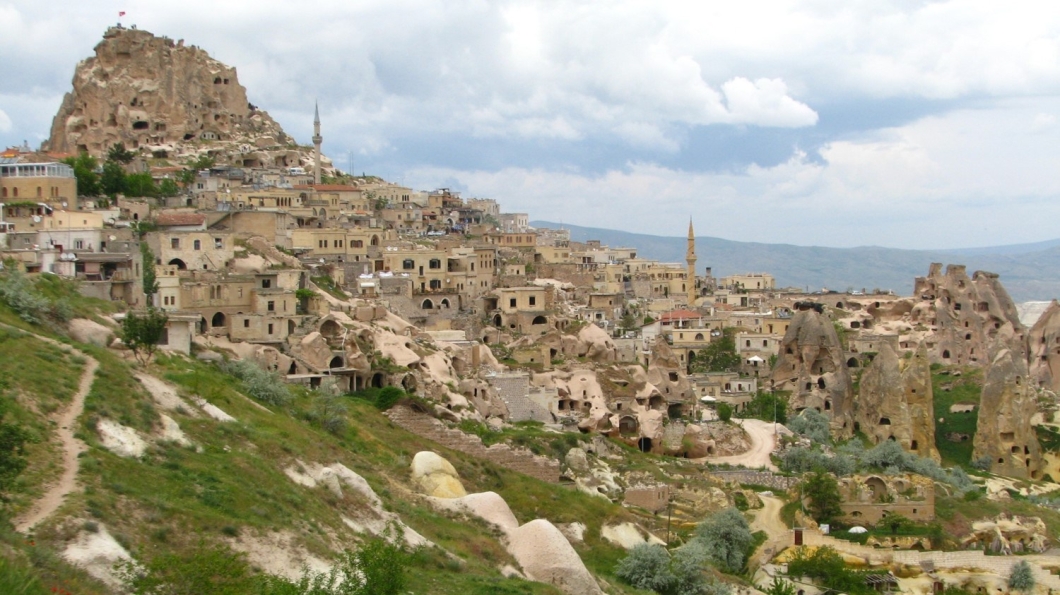
The first glimpse of the ancient settlement of Cappadocia is quite unreal- a raw landscape giving way to a habitable settlement amidst some of the most unusual rock formations. This region of Turkey is known for several reasons- for its volcanic rock formations known popularly as ‘fairy chimneys’, for its importance as a site for habitation which was used by persecuted Christians from Rome, who hid in the caves and carved themselves houses, for its stunning natural beauty. Several of its sites are now tourist attractions- the Goreme Open Air Museum, the Uchisar Citadel, the Kaymalki Underground city.
There are several ways of discovering this settlement- as an understanding of history, of geology of nature, and of architecture and space. When you apply the lens of architecture, stories and lessons unfold at every corner, and the site becomes a study in understanding how the natural and the man-made work together, and how the settlement can become a perfect example of a ‘non-building’.
One of the first things that reveals itself in this region is how a raw landscape is made habitable through several levels of porosity. Starting with the greenery, then a solid expanse of stone, then the minaret-like volcanic portions and finally the last level of porosity of scooped-in cave settlement, this natural gradation is one which is near impossible in a ‘man-made’ settlement.
Here, boundaries are blurred between natural and man-made, between unbuilt and built. The entire settlement can begin anywhere and end anywhere, and still make perfect visual and spatial sense.
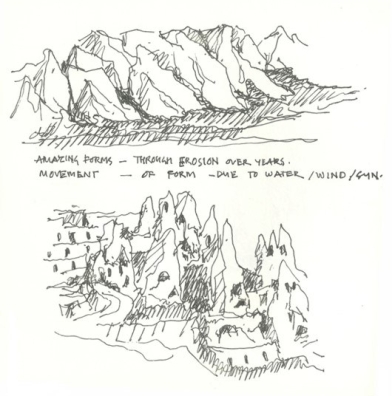
As you go closer and the intricacies of the formations unfold, there are examples of how a geometric form is gradually adopted into an abstract form. At the junctions where stone walls are built into the freely flowing rocks, there are outstanding examples of skill and precision. The flow from the raw natural forms to the rectangles and linear geometry takes place seamlessly.
Although this level of transition in a more contemporary context, there have been attempts in more recent times by architects all over the world to strive towards this.
One such example, not very far from Cappadocia, is the Sancaklar Mosque near the city of Istanbul, designed by Turkish firm Erme Arolat. With the grey unornamented structure cut into the terraced landscape and a sunken cave-like prayer hole, the project was a contemporary take on this dialogue between the natural and the man-made.
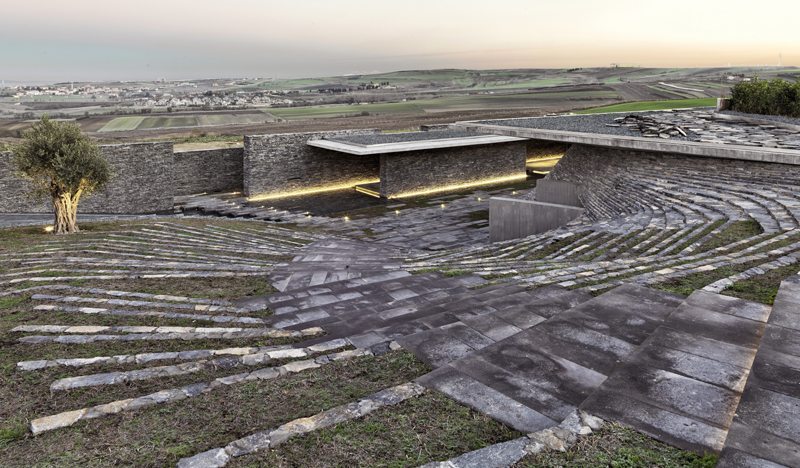
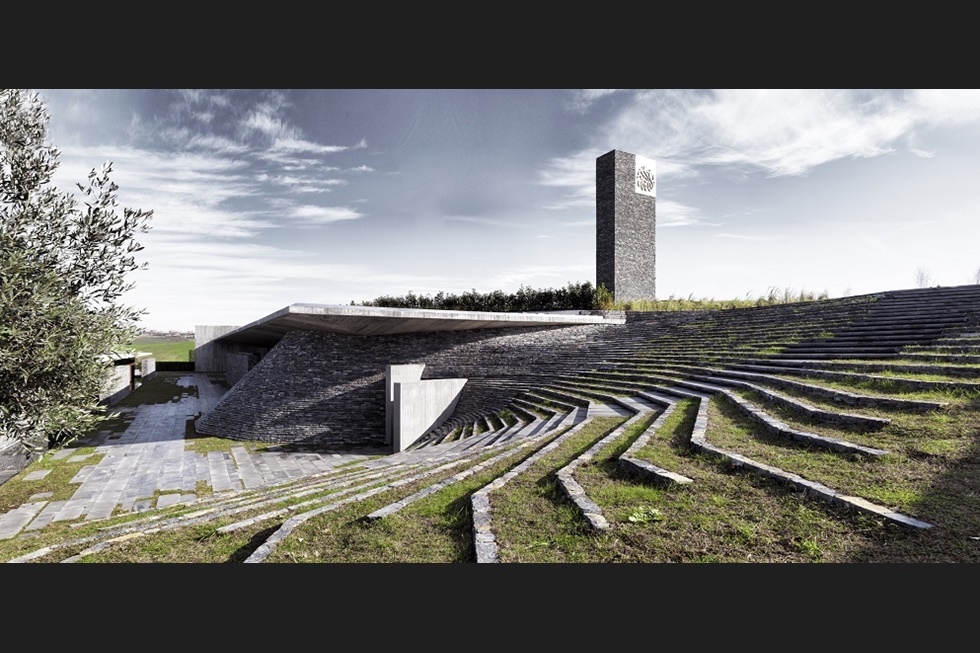
Closer home, in one of Mindspace’s projects in the terraced hills of Coonoor, we also tried to create this ‘non-building’, where the building disappears and is absorbed by the surrounding landscape, and the visual impact of the built structure itself was meant to be as minimal as possible.

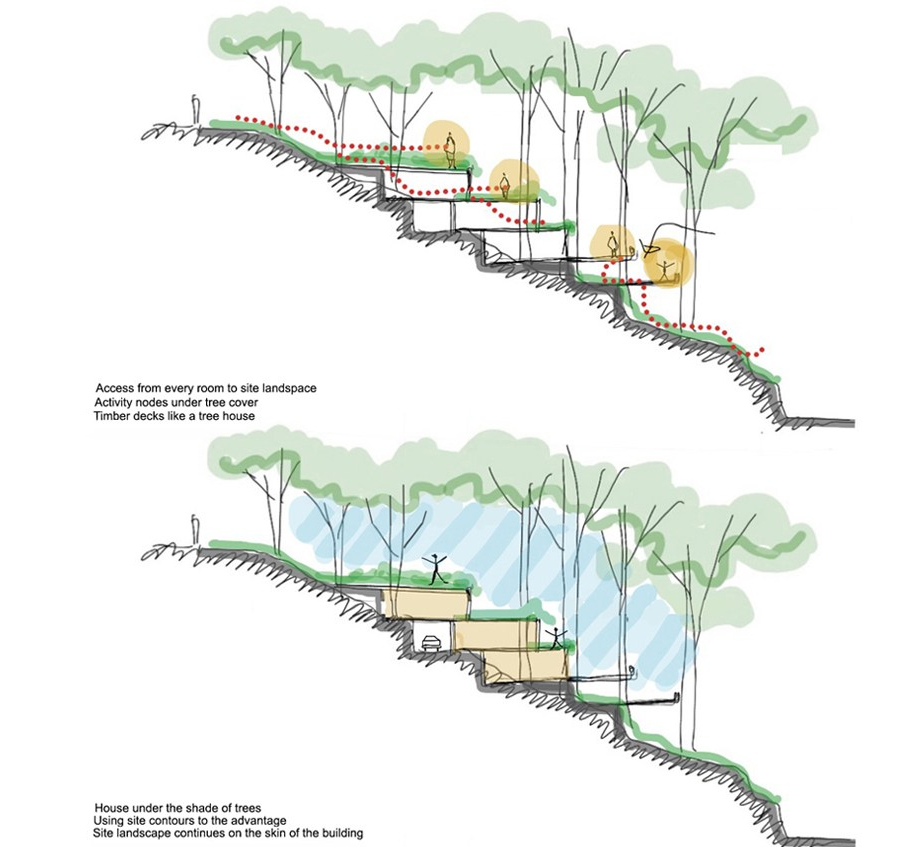
Several other ideas that can have very contemporary, modern parallels can be seen in this ancient settlement. For instance, when you go closer to the caves, there are then sudden encounters with individuality and identity in the form of paintings and the usage of colours in some of the recesses. This seemingly modern expression helps to retain the sanctity and language of the external form, while bringing in of a vibrant streak of personal identity in pockets.
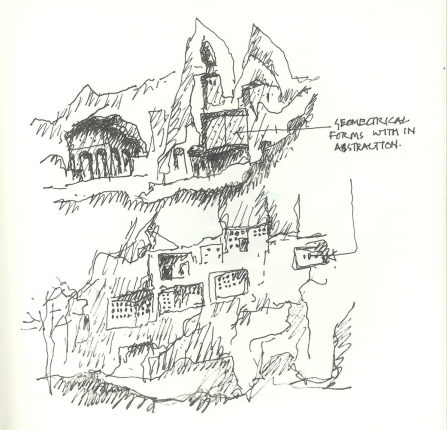
Some of these recesses and caves are still used as tea shops, and in some cases the families running the business still live in the region. These intimate interior spaces are then the final level of porosity, of being directly in contact with the inner-most layer of the settlement.
How does a person carving a cave decide just when to stop? The question can be baffling when you compare the seemingly endless expanse of uninhabited rock, and present day greed for more private, physical space. In these caves, it is fascinating to think of the point when they decided to stop, perhaps when they reached that optimum space , like a bird making its nest and knows that it needs no more.
But through these layers, like in the case of South Indian temples or the rock-cut temples of Ajanta and Ellora, there is a constant shifting of layers that leads back from the intimate to the infinite, where private inner spaces give way to vast open courts.

Sometimes you can encounter a gap in group of massive stone formations and through them you can see the sky framed, and this extremely solid space becomes transparent.
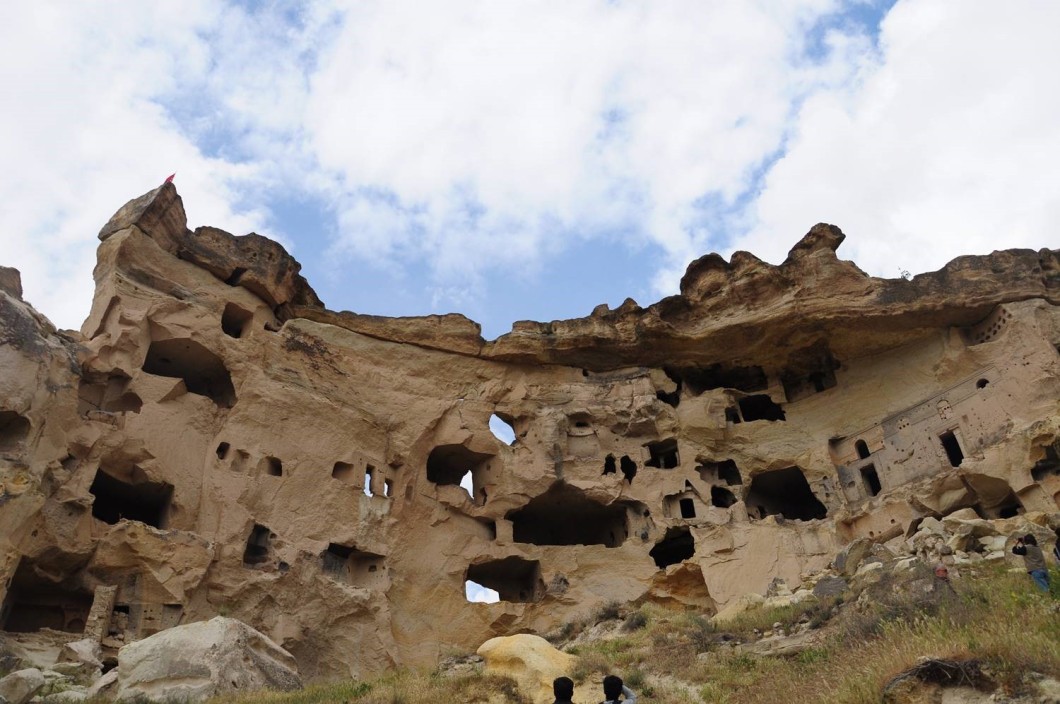
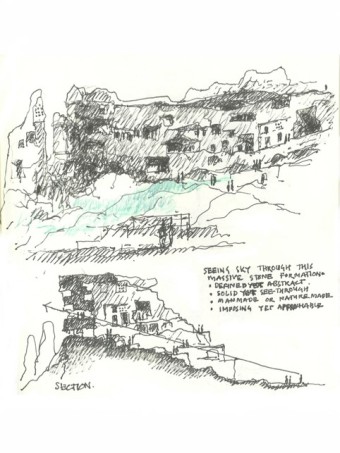
The idea of framing the sky is a part of many historical buildings, for example in the Kumbha Palace in Chittorgarh, Rajasthan. In contemporary architecture too, this can be seen in projects like Indian Institute of Forest Management, Bhopal designed by Anant Raje, or even in other art forms such as the sculptures of Henry Moore.
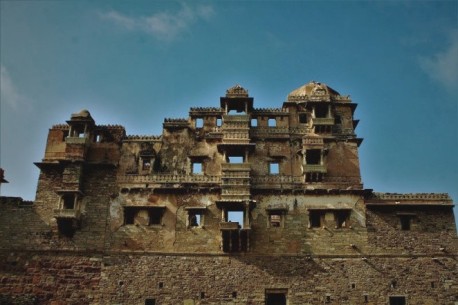
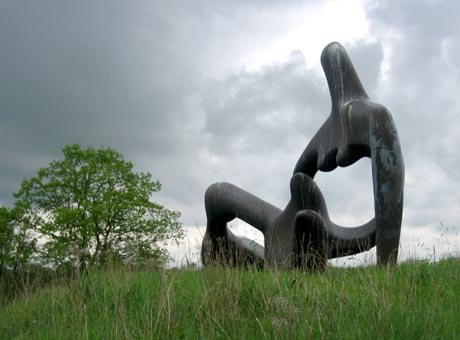
In other parts of Cappadocia such as the Goreme Open Air Museum, groups of rocks enclosing a space, holding it between its palms like in the valleys of Ellora. Winding staircases leading up to the caves that appear so integrated with the natural environment that they can barely be accepted as man-made. Sometimes, there is a feeling like that of a Roman Forum, or of the spaces enclosed by the rocks of Hampi or Luxor, where the space keeps changing as you move in. Even in plan, the winding spaces constantly leave you with a sense of discovery, where a narrow winding path suddenly gives rise to a Church behind.
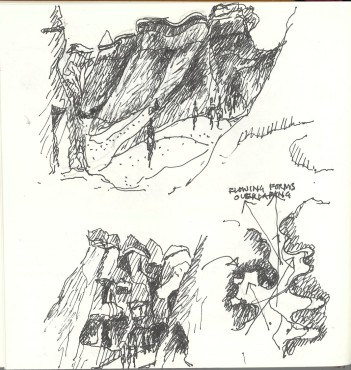
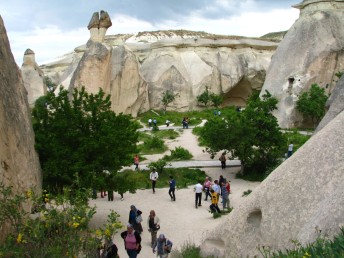
When you approach the rocks from the front, there is a massive scale soaring to the skies, but this tapers down to the human scale and is made more approachable. But as a completely new way of experiencing this same space are the hot air balloons, a feeling of flight that is startlingly different from that of an aircraft, a gradual soaring over these rocks gives the reveals these rocks in a completely different way, echoing the timelessness exuded throughout the region.
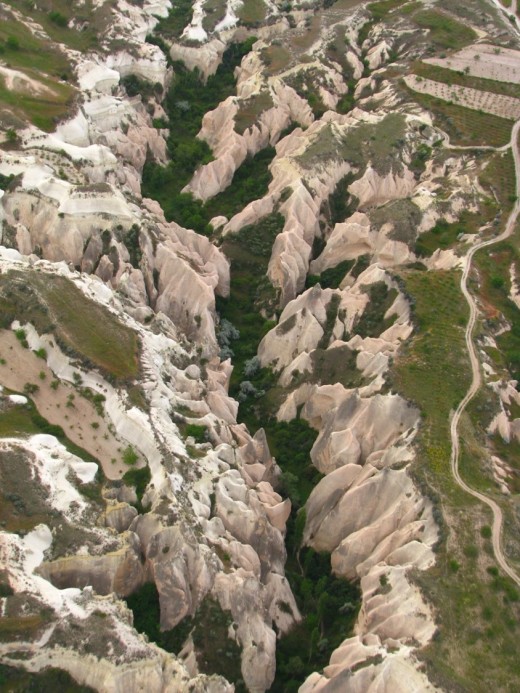
Note- All photos clicked by Mindspace unless otherwise mentioned.


















